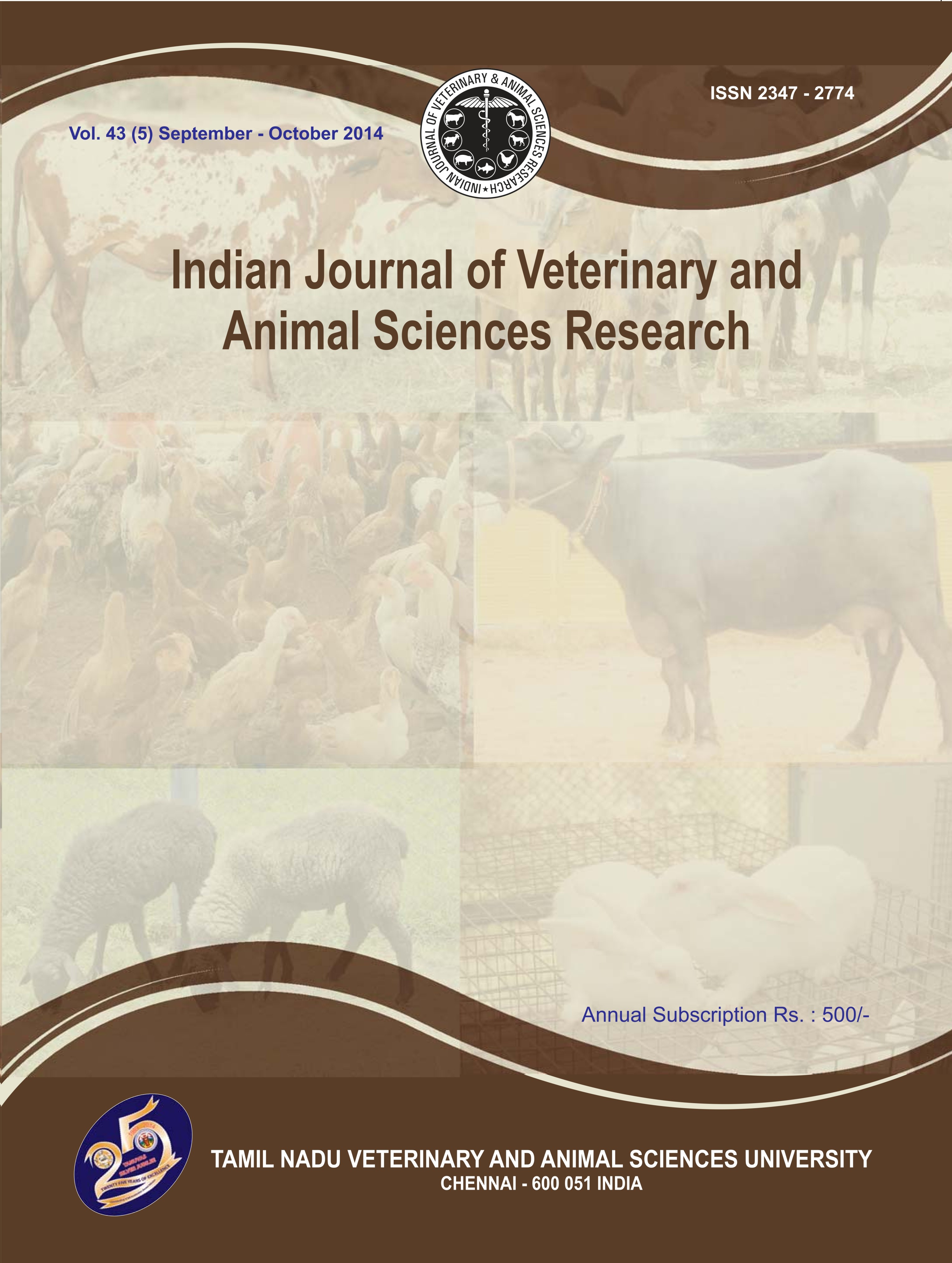PARACETAMOL POISONING IN A CAT AND ITS TREATMENT
DOI:
https://doi.org/10.56093/ijvasr.v43i5.153615Keywords:
Cat, Paracetamol, TreatmentAbstract
A two year old male cat was presented to the Emergency and Critical Care Unit with a history of inappetence after paracetamol 300 mg (Half tablet of 600 mg) administration overnight. On clinical examination the cat had a mild elevation of vital signs. Based on history and clinical signs the case was diagnosed as paracetamol poisoning and treated with activated charcoal a total dose of 3 g)orally and N-acetyl cysteine intravenously at 140 mg/kg along with Ringer’s lactate, 10 ml/kg b.wt. The owner was advised to administer Nacetyl cysteine at 70 mg/kg orally for every 6 hours for five times. After treatment the cat was recovered successfully.
Downloads
References
Aronson LR and Drobatz (1996). Acetaminophen toxicosis in 17 cats. J Vet Emerg Crit Care, 6 : 65–69.
Court, MH and J. David, (1997). Molecular basis for deficient acetaminophen glucuronidation in cats, Greenblatt Biochemical Pharmacology, Vol. 53, pp. 1041-1047.
Kore and Anita M., (1998). Toxicology of Nonsteroidal Anti-inflammatory Drugs. Veterinary Clinics of North America: Small Animal Practice. Volume 20, No. 2; 419-428,1998
Oehme FW, (1986). Aspirin and Acetaminophen: Kirk RW Current Veterinary Therapy IX. Philadelphia: WB Saunders; 188-190.
Perry, H., (1998). Acetaminophen. Clinical Management of Poisoning and Drug Overdose, 3rd ed. W.B. Saunders Company, Philadelphia; 88-198.
Plumb, DC (1999): Veterinary Drug Handbook, 3rd ed. Iowa State University Press, Ames Iowa; 8,134, 462, 562, 583,434, 221.
Downloads
Published
Issue
Section
License
All the copy right belongs to the sponsoring Organization, Tamil Nadu Veterinary and Animal Sciences University, Chennai - 51.

